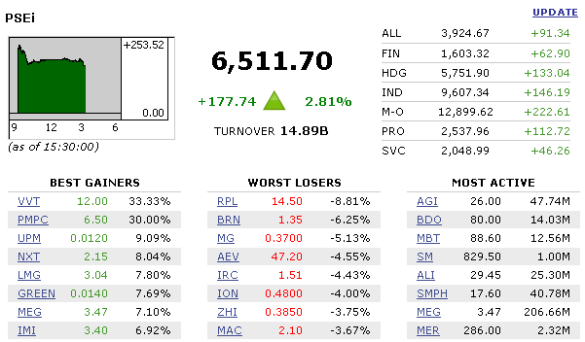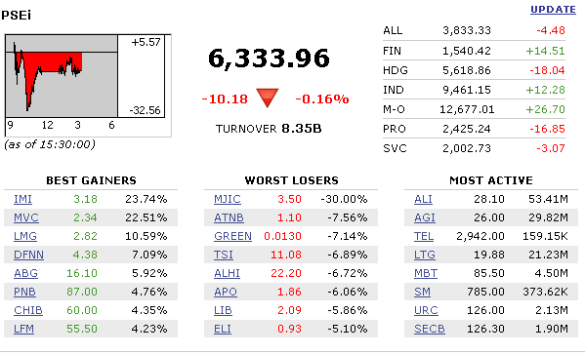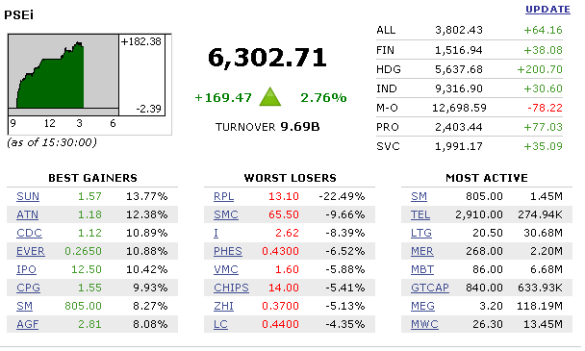
A US FEDERAL Reserve tapering has been priced in by financial markets, which are expected to subsequently react in a “less exaggerated manner.”
“I believe many markets, if not all markets, have factored in the possible action on the part of the Fed,” central bank Deputy Governor Diwa C. Guinigundo said.
“What is uncertain is only the timing and pacing of the reduction.”
The Federal Open Market Committee — the policy-setting body of the US central bank — will be meeting from Sept. 17-18 and analysts expect it to finally announce a reduction in its $85-billion monthly bond-buying program.
Hints in May of a likely end to quantitative easing spooked investors and led to market plunges worldwide, repeated anew in June following statements by Fed chief Ben Bernanke.
The tapering’s actual timing and pace is still unknown, however, and this has led to continued capital flight from emerging markets.
The Philippines has not been spared, with the peso and stock market hitting multi-year lows, although observers believe that strong fundamentals will allow the economy to escape the worst of the volatility.
Mr. Guinigundo pointed out that with the Fed having telegraphed its move, policy makers and fund managers “should have prepared already in terms of monetary policy and for the market, their portfolio decision.”
The Bangko Sentral ng Pilipinas’ (BSP) policy-setting Monetary Board last week decided to keep overnight borrowing and lending rates at record lows of 3.5% and 5.5%, respectively, noting that inflation remained benign amid better-than-expected economic growth.
Central bank Governor Amando M. Tetangco, Jr. has said that keeping policy settings “steady” will allow the BSP to assess brewing risks.
For her part, National Treasurer Rosalia V. de Leon said, “We are in a position of strength because we have always been mindful of the impact once quantitative easing is reduced.”
“Our fundamentals are strong not because of [capital] inflows, but because of reforms institutionalized by the government and these are the pull factors,” she said in a text message.
“We have a spare tire given improving revenues, abundant liquidity and comfortable cash buffer we have built,” Ms. de Leon added.
“We have seen government securities’ rates inching up, but that is expected. However, inflation remains within target so rates should not increase significantly.”
Asked if government borrowing plans would be revised given the prospect of higher interest rates, Ms. de Leon replied that next year’s program could be moved up to the first quarter.
Philippine Stock Exchange president Hans B. Sicat, meanwhile, said volatility would continue even if investors “seem to understand the situation.”
“[T]here are a lot of other factors which are pushing and pulling markets [such as] the extent of the tapering, [who will be the new] Fed chairman, geopolitics, China and ASEAN-(Association of Southeast Asian Nations) related issues,” he said.
Deanno J. Basas, ATR KimEng Asset Management investment director, said: “If the Fed starts to taper [this] week, a big part of the adjustment has been priced in already.”
“Probably, market players will react, markets will move, but in a less exaggerated manner compared to what we saw in May and June when all gains in the stock market were wiped out and the peso touched multi-year lows.”
Given the expected increase in interest rates, First Metro Investment Corp. (FMIC) President Roberto Juanchito T. Dispo, said more companies are expected to “lock in borrowing cost while rates are still low.”
He said that for FMIC, “the runway is full so to speak; we have live mandates from seven corporates, which will raise funding from local capital markets between now and the end of the year.”
He declined to be more specific with regard to the firms looking to tap the debt market, only adding: “They are from the property, power, consumer and utility sectors. There will also be a holding company.” — A. R. R. Gregorio



